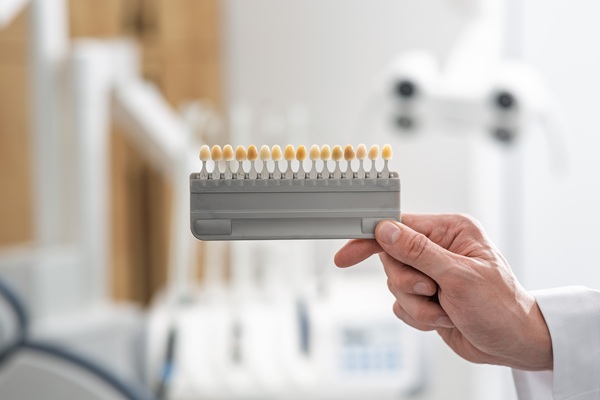Inlays and Overlays from an Experienced Cosmetic Dentist

An experienced cosmetic dentist spends much of their time repairing the damage that results from tooth decay. Hundreds of patients and many years of practice afford cosmetic dentists intimate knowledge of different tooth restoration techniques, giving them the instinct and ability to choose the ideal dental restoration for every possible scenario.
Two such restorations are inlays and overlays. You might need one of them if you have extensive tooth decay that affects a sizable portion of your tooth. Read on to find out how cosmetic dentists use inlays and overlays to restore the health and aesthetics of damaged teeth.
How an experienced cosmetic dentist can reverse the effects of dental problems
Many people seek out cosmetic dentists because they want to correct dental problems and the imperfections they cause. Some patients have crowded, crooked or missing teeth. Many others have discoloration and breakage that happen as a result of tooth decay. For such patients, dental restorations like fillings, crowns, inlays, onlays and overlays become viable treatment options.
How cosmetic dentists use inlays
An inlay is an indirect filling that restores a tooth with a large cavity. Dentists fabricate or request inlays that fit perfectly into a hole caused by moderate tooth decay. An experienced cosmetic dentist will only use an inlay to fill a hole that is right in the middle of a molar.
The only way an inlay works is if there is dental tissue all around it. This means that an inlay will only cover the biting surface in the middle of the tooth, but not the cusps or edges of the tooth. Here is how cosmetic dentists install inlays:
- The dentist examines the extent of damage to a tooth in order to determine the best course of treatment
- They proceed to numb the patient and remove all the problem dental tissues before rinsing out the resulting hole
- If the dentist finds that an inlay is the best option, they take an impression of the tooth
- Dentists who can fabricate the inlay in-house do so while the patient waits
- Those who cannot, send the patient home with a temporary filling and send the impression to a dental lab for fabrication
- Once ready, the dentist installs the inlay, securing it with the help of dental cement or some other type of dental adhesive
Dental inlays only come into play if a molar has a fairly small cavity; one that does not affect the surfaces that face the tongue, the cheeks or adjacent teeth. A dentist will instead opt for an overlay if the damage to the tooth is more extensive.
How cosmetic dentists use overlays
Overlays correct advanced decay in the inner molar and a portion of the biting surface. An overlay not only fills a cavity, but it also covers a significant portion of the biting surface. Overlays cover one or two of the cusps that frame the edges of a molar.
Dentists install overlays with the same procedure they use to install inlays. The only difference between the two types of restorations is the extent of coverage to the surface area of the tooth.
Ready to improve your smile?
Contact our offices to set up an appointment with our experienced cosmetic dentist. After a thorough exam, the dentist will recommend a treatment plan that works for you.
Request an appointment here: https://www.gledhilldental.com or call Gledhill Dental at (509) 800-8410 for an appointment in our Kennewick office.
Check out what others are saying about our services on Yelp: Read our Yelp reviews.
Related Posts
Dental crowns are remarkable in that they protect the biting surface of damaged teeth and restore their natural shape and size. They are often the last line of defense before the dentist recommends removing a compromised tooth. However, how exactly do dental crowns save a damaged tooth? Read on to learn more.A dental crown, so-named…
Dental veneers have become an increasingly popular choice for patients looking to improve the appearance of their smiles. A veneer can enhance the color and shape of your teeth, providing a more uniform and aesthetically pleasing smile. However, they are not a one-size-fits-all solution; certain factors determine whether someone is a good candidate. Patients should…
Dental crowns are a reliable and effective tool for restoring damaged teeth. While most people think of dental crowns in relation to root canals, crowns can also restore beauty and function to cracked teeth. If you have fractured a tooth, a dental crown may be the solution you have been looking for.A dental crown sits…
Dental crowns are often combined with implants to replace missing teeth. Implants are metal posts that are placed in the jaw to replace lost teeth roots, and they serve as foundations for restorations like crowns, bridges, and dentures used to replace missing teeth.Implants are commonly made with titanium, and they are meant to last the…


